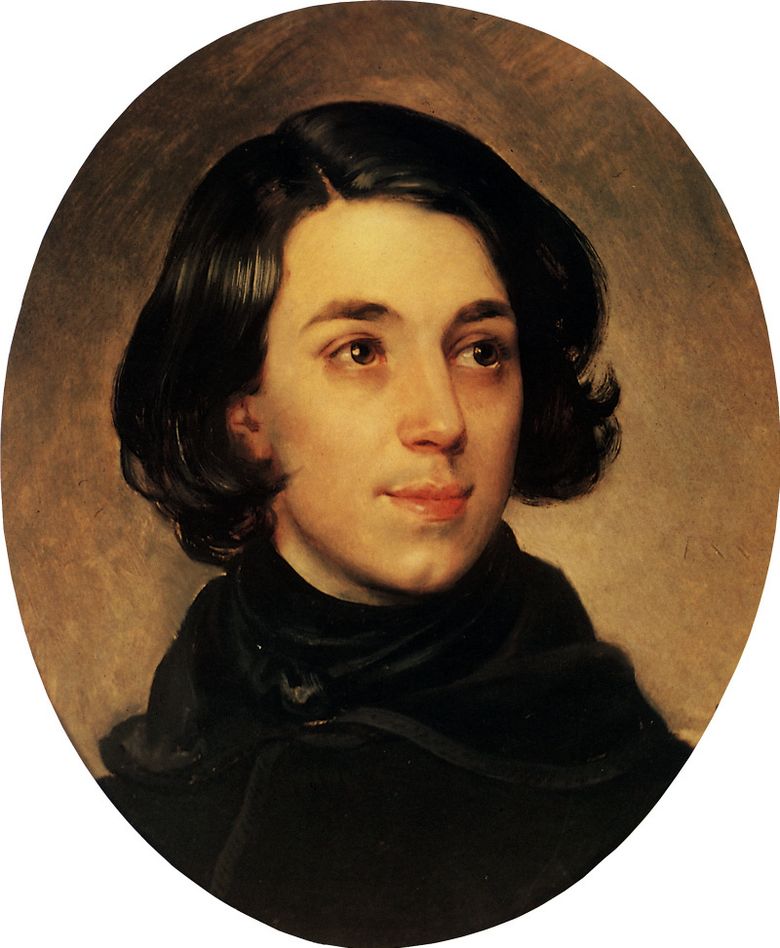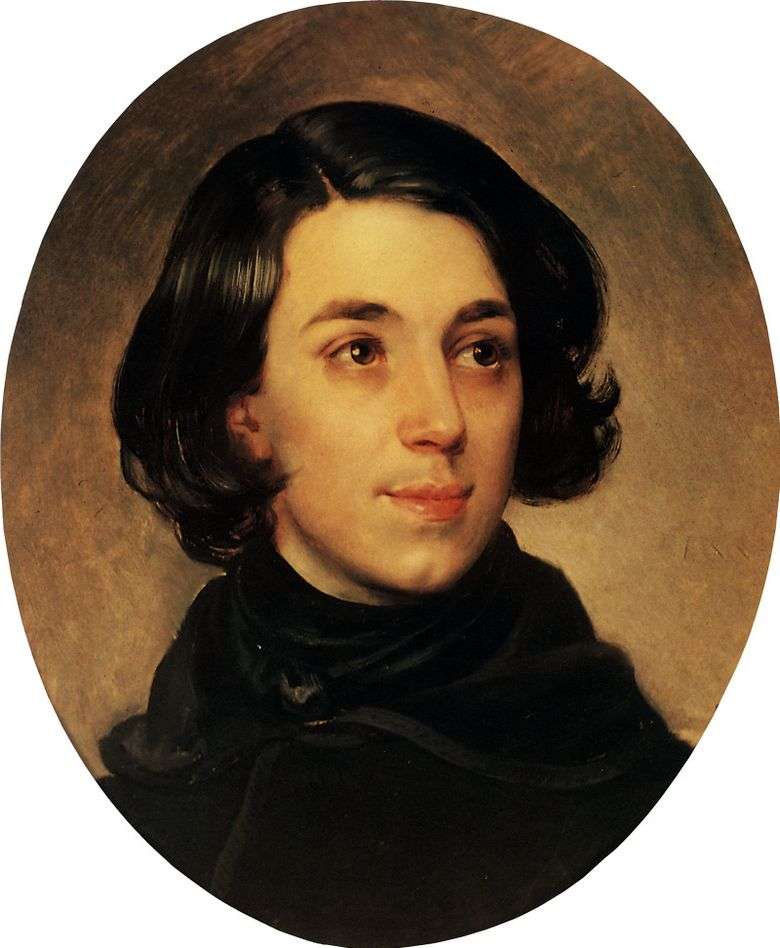
Monighetti Ippolit Antonovich is an architect. He was born in Moscow on May 2, 1819. After graduating from the Moscow Stroganov School, he entered St. Petersburg in the Imperial Academy of Arts for an architectural department in the class of Professor Alexander Pavlovich Bryullov. In 1839 he graduated from the Academy with a gold medal of the second degree. In the 1840s he made several trips to Egypt, Turkey and Italy.
At the personal invitation of the Emperor Nicholas I begins to work in Tsarskoe Selo, where he creates a number of park buildings and residential buildings: the pavilion “Turkish Bath”, “Children’s Farmhouse” -1861, Lamskaya Pavilion With love and tenderness, Bryullov recreated the image of his brother’s pupil – pupil of the architectural class of the Academy – Ippolit Antonovich Monighetti. Portrait Monighetti enchants youthful purity and spontaneity of feelings. He is modest, truthful and at the same time poetically exalted.
The fiery gloss of moistened eyes, the trembling of slightly open lips speak of the young man’s secret passions. Framed by the softly falling black hair, the pale face of Monighetti is overshadowed by creative thought. His ecstatic gaze is fixed dreamily, his face is trusting. So modest and charming Monighetti was in life. “N. A. Monighetti,” wrote about him in an obituary, “belonged to those rare artists who, with considerable talent and extensive indefatigable activities, do not like to expose themselves to the show, he lived in a close family environment and from morning till night, his whole life gave himself to art. “”.
Restrained coloring of the portrait, corresponding to the appearance of the young man in simple black clothes. But from the monotonous-dark gamut Bryullov has extracted the subtlest color sound. Revived only by the pink spot of the lips, the portrait radiates a soft inner light. The portrait of Monighetti came to us in a distorted form. In the last century, he underwent a barbaric operation. His former owner, wishing to “fit” a quadrangular canvas for a spectacular carved oval frame, cut the canvas in painting, thus violating its proportions and the ratio of the figure
 Portrait de I. A. Monighetti – Karl Bryullov
Portrait de I. A. Monighetti – Karl Bryullov Retrato de I. A. Monighetti – Karl Bryullov
Retrato de I. A. Monighetti – Karl Bryullov Portrait of PA Kikin by Karl Bryullov
Portrait of PA Kikin by Karl Bryullov Portrait of Archaeologist Michelangelo Lanci by Karl Bryullov
Portrait of Archaeologist Michelangelo Lanci by Karl Bryullov Portrait of A. Bryullov by Karl Bryullov
Portrait of A. Bryullov by Karl Bryullov Portrait of the sculptor IP Vitali by Karl Bryullov
Portrait of the sculptor IP Vitali by Karl Bryullov Portrait of musician M. Yu. Vielgorsky by Karl Bryullov
Portrait of musician M. Yu. Vielgorsky by Karl Bryullov Portrait of KA Janish by Karl Bryullov
Portrait of KA Janish by Karl Bryullov